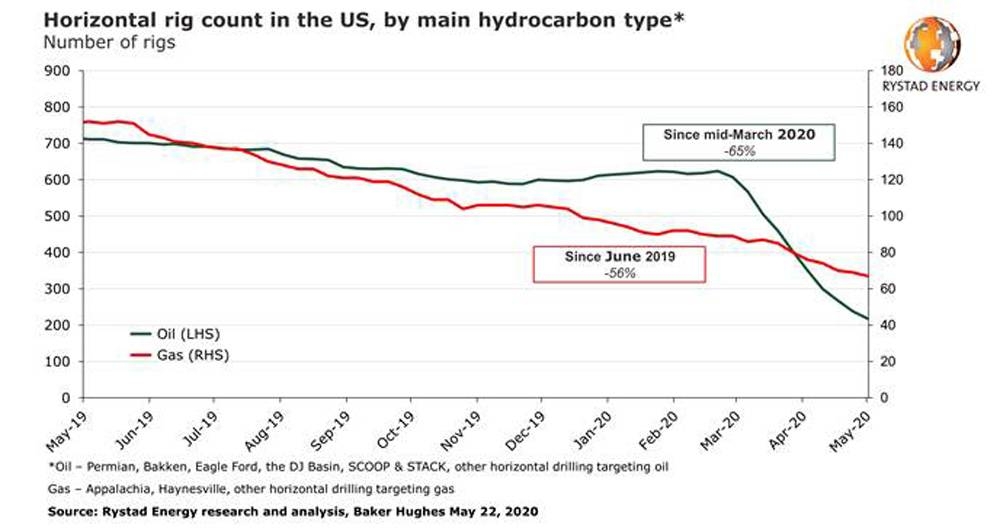
Permian basin keeps drilling alive while US rig count decline seems bottomless
OSLO — Although the COVID-19 pandemic continues to decimate active horizontal rigs in the US, the Permian Basin is emerging as the last surviving epicenter of drilling activity, a Rystad Energy analysis of Baker Hughes data shows.
The total horizontal oil rig count fell to 218 rigs last week, a 65% decline from the peak of 624 rigs seen in the middle of March 2020. Horizontal gas drilling was down to 67 rigs last week, which is 56% below the previous peak seen in June 2019.
Rig count is widely considered to be one of the most important indicators of investment appetite by E&Ps. Not only does it illustrate the actual drilling activity in the market, but it is also a key metric of consumer confidence, closely related to price developments.
Two fundamental activity trends persist. The Permian has systematically increased its market share in nationwide horizontal oil drilling, reaching 74% as of last week, while gas-focused drilling has increased its market share in total horizontal activity, taking up a 23.5% of the drilling pie.
“The current 65% cumulative decline will likely widen further as we still expect around 50 additional horizontal oil rigs may be lost in the next few weeks,” said Artem Abramov, Rystad Energy’s head of Shale research.
The horizontal oil rig count decline rates are getting shallower, with the two-week decline rate moderating to 18.7%, down from the 25.6% rate seen three weeks ago.
Yet the cumulative decline from peak-activity has set another record. In the two previous downturns in 2015 and 2016, cumulative decline only reached 53% to 54% before recovery was initiated.
The number of counties with active horizontal oil drilling, meaning that they have at least one rig active, fell to 42 in the US, with 25 in Texas and 15 in the Permian.
A closer look at county-level trends reveals that it is, in fact, two major counties in the whole of the Permian which have exhibited relative resilience in activity — Eddy County with only a 28% decline from peak activity, and Midland County with a 48% decline from peak activity.
All other major and mid-size counties have seen declines of more than 60% with some, such as Ward, Pecos, Andrews and Culberson, having lost 80% to 100% of their active rigs. The combined share of Eddy and Midland counties in basin-wide horizontal drilling has increased from 25% in the middle of March to 41% at present.
Other liquid basins already exhibit much steeper cumulative rig activity declines. Eagle Ford stands out as having the shallowest cumulative decline of 70%. Horizontal rig activity in South Texas has declined from 80 rigs at the beginning of the year to “only” 24 rigs, largely thanks to ConocoPhillips’s decision to maintain robust drilling activity and build its drilled but uncompleted (DUC) wells inventory.
The Bakken, SCOOP & STACK and the DJ basin lost 75% to 80% of their active rigs in the last 10 weeks, while activity in the Powder River Basin is down from 18 rigs to two.
A gradual downward adjustment in horizontal gas rig activity has also continued. Most of the significant declines in the last few weeks have come from Marcellus, specifically from the southwestern portion of the basin. As of now, horizontal drilling activity in all major gas basins is observed at or below maintenance activity requirements and the potential from the DUC inventory has largely been depleted. — Rystad Energy